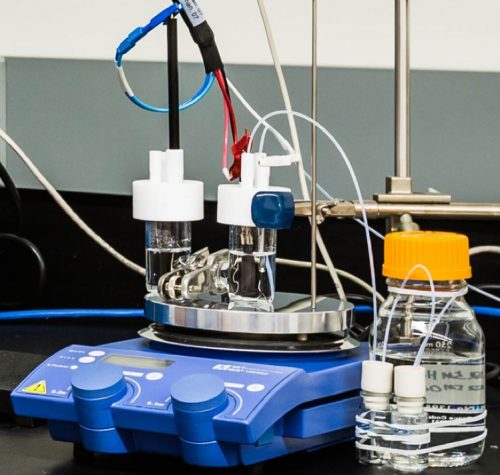As humans continue to burn fossil fuels, atmospheric carbon dioxide has reached record levels. But what if we could convert this gaseous molecule into something more useful?
Recent research conducted by Yueshen Wu, a PhD student in Professor Hailing Wang’s lab at Yale, might answer this question. In collaboration with Professor Gary Brudvig and Assistant Professor Zhenxing Feng from Oregon State University, Wu tested a new way to electro-reduce carbon dioxide by using the power of electricity to change its chemical structure.
Wu created a zinc-poryphorin complex which, under the right conditions, can convert carbon dioxide into carbon monoxide with 95% efficiency. Carbon monoxide is typically perceived as a dangerous chemical. It is a colorless, odorless gas that can prove fatal upon long-time exposure. However, it actually serves a number of practical uses, primary among them as a feedstock chemical for energy-rich hydrocarbons.
Electro-reduction of carbon dioxide has been attempted using a number of metals, including gold and copper. This complex, however, is the first of its kind. Although the performance of Wu’s compound is not yet comparable to established methods, his zinc-polyphorin complex is unique in that it is redox-innocent – meaning the metal at the center of his complex does not have to take electrons for the reaction to work.
Wu compares his form of electro-reduction to the natural process of photosynthesis, where plants convert carbon dioxide into usable sugars. “Nature uses a metal center that is redox-innocent, and the way our compound behaves is similar to that process,” said Wu.
This research has significant potential as carbon emissions continue to climb. Converting an environmentally harmful gas to a chemical building block, changing a negative into a positive, can only help as scientists search for ways to manipulate the gases responsible for warming this planet.

